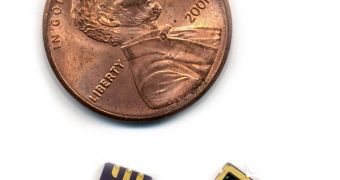A team of experts at the Massachusetts Institute of Technology (MIT), in Cambridge, announce the development of a new method for engineering microelectromechanical systems (MEMS) in 3D.
These tiny devices, which are about as large as the width of a human hair (roughly 100 microns), have many uses nowadays, for instance in accelerometers, actuators, biological sensors and gyroscopes, among others.
But one of the problems preventing even more widespread use is that they could not be constructed in 3D, until now. Usually, the instruments are simply etched on the surface of a microchip, or on a similar support. Now, the MIT team figured out a way to engineer them in an extra dimension.
Moving past new applications, the new work is very important because it demonstrates that 3D MEMS can be constructed using existing techniques. Previously, it was thought that the scientific community first needed to develop more advanced manufacturing technologies.
Scientists also believed that they needed to create precise arrangements of smaller components in order to assemble the three-dimensional structures. But the MIT team demonstrated in this research that existing fabrication processes are perfectly capable of producing the required components.
The group already built a prototype 3D MEMS on a chip that can detect acceleration. This is impossible with the 2D version of the device. The entire structure – chip included – fits many times over on a single penny, as evidenced in the image to left.
“One of the main driving factors in the current MEMS industry is to try to make fully three-dimensional devices on a single chip, which would not only enable real 3D sensing and actuation, but also yield significant cost benefits,” researcher Fabio Fachin explains.
“A MEMS accelerometer could give you very accurate acceleration [measurements] with a very small footprint, which in space is critical,” adds the scientist, who is a postdoctoral researcher with the MIT Department of Aeronautics and Astronautics.
He believes that the new design may also be augmented with sensors. The small detectors could be placed both atop and underneath the 3D MEMS, enabling it to perform entirely new functions.
Details of their research appear in a paper that has been accepted for publication in an upcoming issue of the esteemed scientific Journal of Microelectromechanical Systems.

 14 DAY TRIAL //
14 DAY TRIAL //